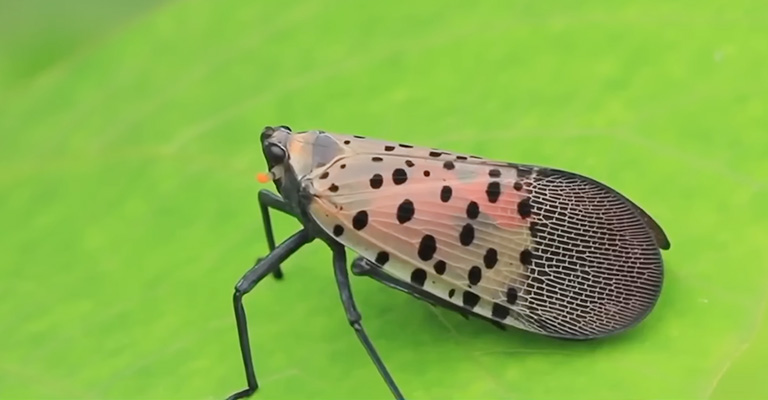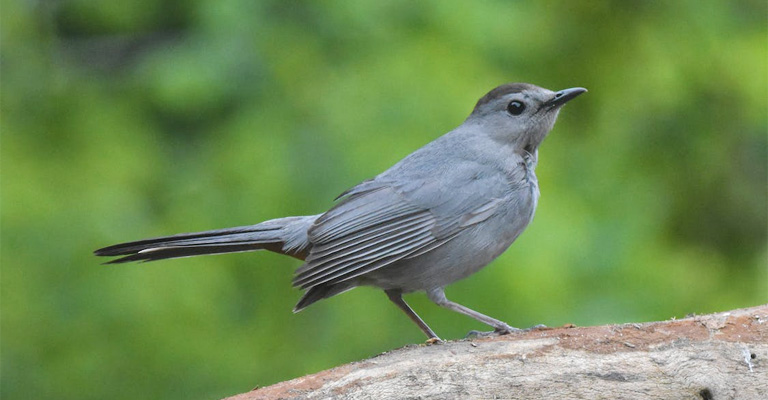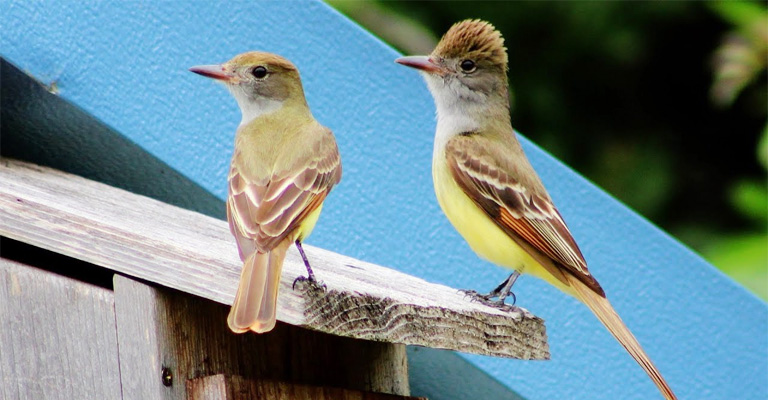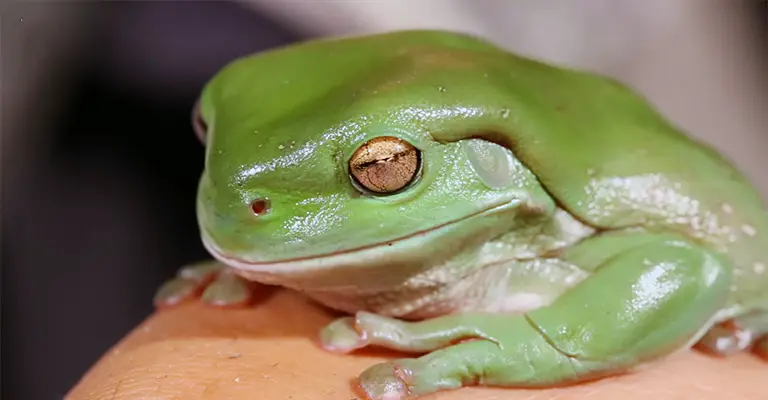In the intricate tapestry of ecological interactions, the refusal of birds to feast upon lanternflies adds a layer of intrigue to the delicate balance of nature. Lanternflies, with their vibrant hues and conspicuous presence, are seemingly ripe for avian consumption.
However, the avian world’s avoidance of these insects raises questions about the underlying mechanisms that guide birds’ feeding behaviors.
From toxicity and bitter taste to warning coloration and nutritional inadequacy, a multitude of factors likely contribute to the reluctance of birds to indulge in these seemingly abundant insects.
Exploring why don’t birds eat lanternflies opens a window into the complex interplay of adaptation, survival strategies, and the intricate nuances of predator-prey relationships.

Why Don’t Birds Eat Lanternflies?
Birds generally avoid eating lanternflies due to several factors that make these insects unappetizing or even harmful.
Here are some reasons why birds might not consume lanternflies:
Toxicity
Lanternflies, particularly spotted lanternflies, contain toxic compounds that they acquire from feeding on plant sap, especially from trees like the Tree of heaven.
These compounds can deter birds from consuming them, as birds have evolved to recognize and avoid toxic prey.
Bitter Taste
The chemicals present in lanternflies can give them a bitter taste. Birds rely heavily on taste cues to assess the edibility of potential prey. The unpleasant taste might discourage them from eating lanternflies.
Aposematic Coloration
Some lanternflies exhibit aposematic coloration—bright warning colors that signal to predators that they are toxic or unpalatable. Birds may recognize these warning colors and avoid consuming such insects.
Ineffective Prey
Lanternflies are not very nutritious for birds. They have a relatively low nutritional content compared to other insect prey, making them less attractive as a food source.
Lack of Adaptation
Birds might not have had sufficient time to adapt to feeding on lanternflies, especially if these insects are relatively new to their environment.
Evolutionary adaptation can take time, and birds might not have developed effective strategies to consume or digest lanternflies.
Invasive Species
In regions where lanternflies are invasive species, local birds may not have coevolved with them and might lack the behavioral or physiological adaptations to consume them safely.
Alternate Prey Preference
Birds have a wide array of prey options available to them. If they have other preferred and readily available food sources, they might choose not to consume lanternflies.
Foraging Behavior
Birds might not recognize lanternflies as suitable prey due to differences in their size, shape, or movement compared to their usual prey items.
Learning and Experience
Birds learn from their experiences and those of other birds. If an individual bird or a population encounters lanternflies and finds them unappetizing or harmful, this knowledge could influence future interactions.
Overall, the combination of toxic compounds, unappealing taste, and aposematic coloration likely contributes to birds’ avoidance of lanternflies.
As these insects continue to interact with bird populations, some birds might eventually develop strategies to deal with them, but for now, various factors make lanternflies an unattractive food choice for many bird species.
Which Bird Eats Lanternflies?
Some birds that eat lanternflies are:
Chickens

Chickens are domesticated birds that belong to the order Galliformes and the family Phasianidae. They are considered among the most common and widespread domestic animals, with a population of more than 23 billion in 2018.
Chickens are omnivorous and eat a variety of insects, seeds, grains, worms, and fruits. They have been observed to eat lanternflies, both adults and nymphs, by pecking at them with their sharp beaks.
Chickens are ranked among the top predators of these invasive insects.
Gray Catbirds

Gray catbirds are medium-sized songbirds that belong to the order Passeriformes and the family Mimidae. They are native to North America and Central America, and they inhabit thickets, forests, gardens, and meadows.
They are named for their distinctive call, which sounds like a cat’s meow. Gray catbirds are mainly frugivorous, but they also eat insects, especially during the breeding season.
They have been reported to eat lanternflies, both adults and nymphs, by ripping off their bright red hind wings before swallowing them. Gray catbirds are considered among the most efficient predators of spotted lanternflies.
Great Crested Flycatchers

Great crested flycatchers are large flycatchers that belong to the order Passeriformes and the family Tyrannidae. They are native to North America and South America, and they inhabit woodlands, orchards, parks, and suburbs.
They have bright yellow bellies, gray heads, and brown backs. They also have a loud and harsh call that sounds like “wheep”.
Great crested flycatchers are insectivorous, and they catch their prey by flying from a perch or hovering in the air. They have been seen to eat lanternflies, both adults and nymphs, by grabbing them with their wide bills. Great crested flycatchers eat about 95% of insects in their diet.
Red-Bellied Woodpeckers

Red-bellied woodpeckers are medium-sized woodpeckers that belong to the order Piciformes and the family Picidae. They are native to North America and Central America, and they inhabit forests, woodlands, swamps, and urban areas.
They have black-and-white striped backs, red caps, and red patches on their bellies. They also have a loud and chattering call that sounds like “kwirr.” Red-bellied woodpeckers are omnivorous, and they eat insects, nuts, seeds, fruits, and sap.
They have been observed to eat lanternflies, both adults and nymphs, by pecking at them with their strong bills. Red-bellied woodpeckers are among the few birds that can eat lanternflies without removing their wings.
These are some of the birds that eat lanternflies. However, there may be other bird species that feed on these insects as well.
Researchers at Penn State University are currently investigating whether native birds can help control the lanternfly population by eating them.
Are There Any Other Animals That Eat Lanternflies?
Yes, there are other animals that eat lanternflies besides birds and insects. Some of them are:
Koi Fish

Koi fish are ornamental varieties of domesticated carp that are kept in outdoor ponds or water gardens. They are native to Asia but have been introduced to many parts of the world.
Koi fish are omnivorous and eat a range of food, including algae, plants, insects, and worms. They have been observed to eat lanternflies that fall into the water or land on aquatic plants.
Koi fish can help reduce the lanternfly population near water sources.
Ducks

Ducks are aquatic birds that belong to the order Anseriformes and the family Anatidae. They are found on every continent except Antarctica, and they inhabit a variety of habitats, such as lakes, rivers, ponds, marshes, and coasts.
Ducks are omnivorous and eat a variety of food, including plants, seeds, insects, mollusks, crustaceans, and fish.
They have been reported to eat lanternflies, both adults and nymphs, by pecking at them with their bills. Ducks can help control the lanternfly population in wetland areas.
Snakes

Snakes are legless reptiles that belong to the order Squamata and the suborder Serpentes. They are found on every continent except Antarctica, and they inhabit a variety of habitats, such as forests, grasslands, deserts, mountains, and oceans.
Snakes are carnivorous and eat a variety of prey, such as rodents, birds, eggs, lizards, frogs, fish, and insects.
They have been known to eat lanternflies, both adults and nymphs, by swallowing them whole. Snakes can help reduce the lanternfly population in wooded areas.
Green Fogs

Green frogs are amphibians that belong to the order Anura and the family Ranidae. They are native to North America and Central America, and they inhabit a variety of habitats, such as ponds, lakes, streams, swamps, and marshes.
Green frogs are carnivorous and eat a variety of prey, such as insects, worms, spiders, snails, and small fish. They have been seen to eat lanternflies that land near the water or on aquatic plants.
Green frogs can help control the lanternfly population near water sources.
These are some of the other animals that eat lanternflies. However, there may be more animals that feed on these insects as well.
Researchers are still studying the impact of lanternflies on the ecosystem and the potential role of natural predators in controlling their population.
FAQ
Birds often avoid eating lanternflies due to their toxicity, bitter taste, and aposematic coloration, which signals their unpalatability. These factors discourage birds from consuming these insects.
Lanternflies, particularly spotted lanternflies, can contain toxic compounds acquired from feeding on certain plants. These compounds deter birds from eating them.
Yes, many birds are capable of recognizing aposematic coloration, which is a warning signal that an organism is unpalatable or toxic. This coloration can discourage birds from consuming such insects.
Yes, lanternflies have relatively low nutritional content compared to other insect prey. Birds might prioritize more nutritious food sources over these insects.
Given sufficient time, some bird species might adapt to consume lanternflies if there’s an ecological advantage.
However, this process can take generations and depends on various factors, including the insects’ abundance and the birds’ ability to tolerate or neutralize their toxins.
Conclusion
The avian world’s reluctance to dine on lanternflies is a vivid testament to nature’s intricate defense mechanisms and the intricate dance of survival strategies.
Toxic compounds, bitter flavors, aposematic coloration, and a lack of nutritional value all collectively dissuade birds from considering these insects as viable food sources.
As we ponder the enigma of birds steering clear of what appears to be a readily available meal, we are reminded that nature’s dynamics are far from simplistic.
The avian avoidance of lanternflies serves as a reminder that every interaction in the natural world is woven with complex threads, unveiling the breathtaking complexity that governs the relationship between predator and prey.